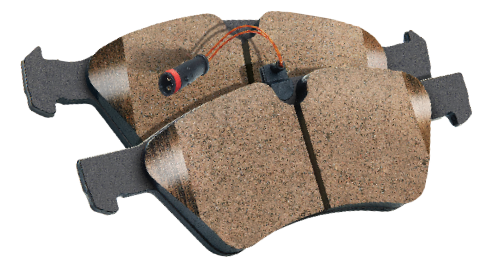What is a Ceramic Brake Pad?
Ceramic brake pads have upended the traditional concept of ceramic brakes, which are made up of ceramic fibers (the main component is alumina), fillers without iron, adhesives and small amounts of metal.
Many consumers will mistake the brake pad for ceramic at first, but it is actually based on the principle of metal ceramics. When braking at high speed, the brake pad will generate high temperature on the friction surface, and a similar reaction of metal-ceramic sintering will occur on the surface of brake pad at such a high temperature, which makes brake pad have good stability. However, the friction fibers of traditional semi-metal brake pads are mainly composed of iron powder and coarse steel velvet and brake pads do not produce sintering at such temperatures. Due to the sharp increase in surface temperature, the surface material will melt down and even produce air cushion, which will result in the sharp reduction of braking performance or complete loss of braking after continuous braking.
Ceramic brake pads, which include mineral fibers, aramid fibers, and ceramic fibers, are lighter in color than other brake pads.

Advantages of ceramic brake pads
* There is no metal in it, so there will be no metal loss when rubbing;
* The noise is low and there will be no abnormal shouting during normal driving;
* Ceramic has good high-temperature resistance and stability, and the friction coefficient of which is not easy to change;
* The service life of ceramic brake is more than 50% higher than that of ordinary semi-metal and there is no scratch;
* It has a good mechanical strength and physical performance, which can withstand high pressure and shear force, and the fast heat dissipation will not affect the braking;
* The thermal decay performance of ordinary brake pads is low. The increase of brake oil temperature during high temperature and emergency braking will delay braking and even lose braking effect. As a result, the safety coefficient of ordinary brake pads is low, while ceramic ones are safer.
The disadvantage of ceramic brake pads
Ceramic brake pads are expensive.









